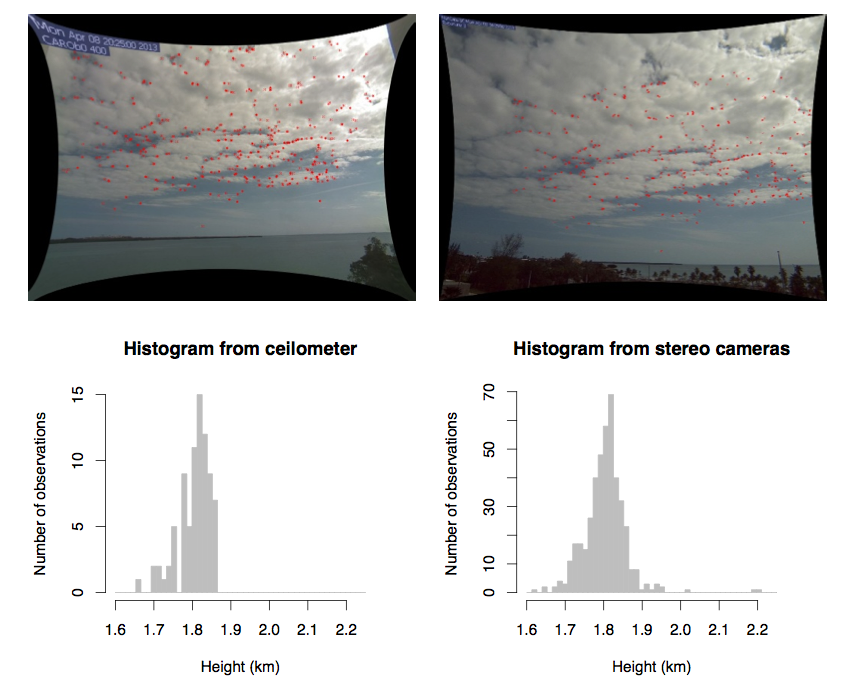Öktem, Prabhat, Lee, Thomas, Zuidema, and Romps, Stereo photogrammetry of oceanic clouds, JAOT, 2014
Television coverage
Errata
In Table 1, "Eastward and westward" should be "Eastward and northward". In Table 4, the values of u and v should be minus what is displayed. On the abscissas of Figure 14, "Eastward" should be "Westward" and "Northward" should be "Southward". These have all been corrected in the PDF below.
Paper
Description
Our two eyes allow us to calculate distances to objects based on the slight differences they perceive in the positions of objects. This slight difference -- called "parallax" -- can be observed by holding a finger in front of your face and alternating which eye you keep open and which you hold closed. Using digital cameras, we can use parallax to calculate the precise 3D position of any object in the field of view.
In this study, we extend this technique to the study of clouds in an oceanic setting. When looking out over the ocean, there are none of the landmarks that are typically used to calibrate the orientation of the cameras. Nevertheless, using the horizon and a consistency constraint, it is shown that camera calibration is still possible in this setting. Cloud heights and wind speeds are then calculated using only images from two cameras, and these heights and speeds are validated against other, more expensive, instrumentation. The advantages of this technique include the ability to calculate the heights and speeds of clouds that are tens of kilometers away, as opposed to many other instruments that can only observe the atmosphere directly above them.
(top) Contemporaneous frames from the left and right cameras with feature points marked in red. (bottom left) The histogram of cloud-base heights measured over 20 minutes by a ceilometer. (bottom right) The histogram of cloud-base heights measured from feature points obtained from the instantaneous photographs.
